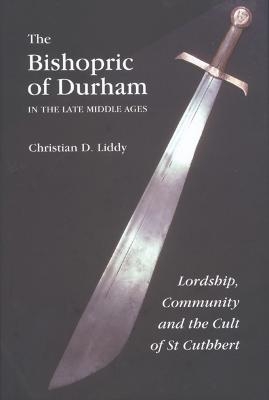
The Bishopric of Durham in the Late Middle Ages
Lordship, Community and the Cult of St Cuthbert
Seiten
2008
The Boydell Press (Verlag)
978-1-84383-377-2 (ISBN)
The Boydell Press (Verlag)
978-1-84383-377-2 (ISBN)
- Titel ist leider vergriffen;
keine Neuauflage - Artikel merken
New study sets the medieval palatinate of Durham firmly in the context of a community built round the cult of St Cuthbert.
North-East England contained some distinctive power structures during the late middle ages, notably the palatinate of Durham, where writs were issued in the name of the bishop of Durham rather than of the king and the bishop exercised secular authority as earl palatine. The core of the palatinate was the bishopric of Durham, an area bounded by the rivers Tyne and Tees and distinguished by an illustrious tradition, focusing upon Durham cathedral and the cult of St Cuthbert. Here resided the Haliwerfolc, the 'people of the saint'.
This book, unlike previous interpretations which have tended to approach Durham primarily as a form of devolved royal power whose autonomywas gradually circumscribed by the crown, reviews the operation of palatine government in the light of more recent paradigms about the nature of power and identity in medieval England. In particular, it sees the concept of the county community as critical to a new understanding of the social and political history of the bishopric. In Durham this was a community built not upon patterns of landholding, social interaction or office-holding; it was in the concept of the Haliwerfolc and in the cult of St Cuthbert that the inhabitants of the bishopric possessed their own distinctive culture of community and identity.
CHRISTIAN D. LIDDY is Lecturer in History at the University of Durham.
North-East England contained some distinctive power structures during the late middle ages, notably the palatinate of Durham, where writs were issued in the name of the bishop of Durham rather than of the king and the bishop exercised secular authority as earl palatine. The core of the palatinate was the bishopric of Durham, an area bounded by the rivers Tyne and Tees and distinguished by an illustrious tradition, focusing upon Durham cathedral and the cult of St Cuthbert. Here resided the Haliwerfolc, the 'people of the saint'.
This book, unlike previous interpretations which have tended to approach Durham primarily as a form of devolved royal power whose autonomywas gradually circumscribed by the crown, reviews the operation of palatine government in the light of more recent paradigms about the nature of power and identity in medieval England. In particular, it sees the concept of the county community as critical to a new understanding of the social and political history of the bishopric. In Durham this was a community built not upon patterns of landholding, social interaction or office-holding; it was in the concept of the Haliwerfolc and in the cult of St Cuthbert that the inhabitants of the bishopric possessed their own distinctive culture of community and identity.
CHRISTIAN D. LIDDY is Lecturer in History at the University of Durham.
Introduction
Land and Power
Lordship and Society
Office-Holding
The Haliwerfolc and the Politics of Community
Epilogue
| Erscheint lt. Verlag | 28.5.2008 |
|---|---|
| Reihe/Serie | Regions and Regionalism in History |
| Zusatzinfo | 2 b/w, 8 line illus. |
| Verlagsort | Woodbridge |
| Sprache | englisch |
| Maße | 156 x 234 mm |
| Gewicht | 1 g |
| Themenwelt | Geisteswissenschaften ► Geschichte ► Allgemeine Geschichte |
| ISBN-10 | 1-84383-377-8 / 1843833778 |
| ISBN-13 | 978-1-84383-377-2 / 9781843833772 |
| Zustand | Neuware |
| Haben Sie eine Frage zum Produkt? |
Mehr entdecken
aus dem Bereich
aus dem Bereich
eine Familiengeschichte der Menschheit
Buch | Hardcover (2023)
Klett-Cotta (Verlag)
CHF 68,60
Eine wahre Geschichte von Schiffbruch, Mord und Meuterei
Buch | Hardcover (2024)
C.Bertelsmann (Verlag)
CHF 34,95


